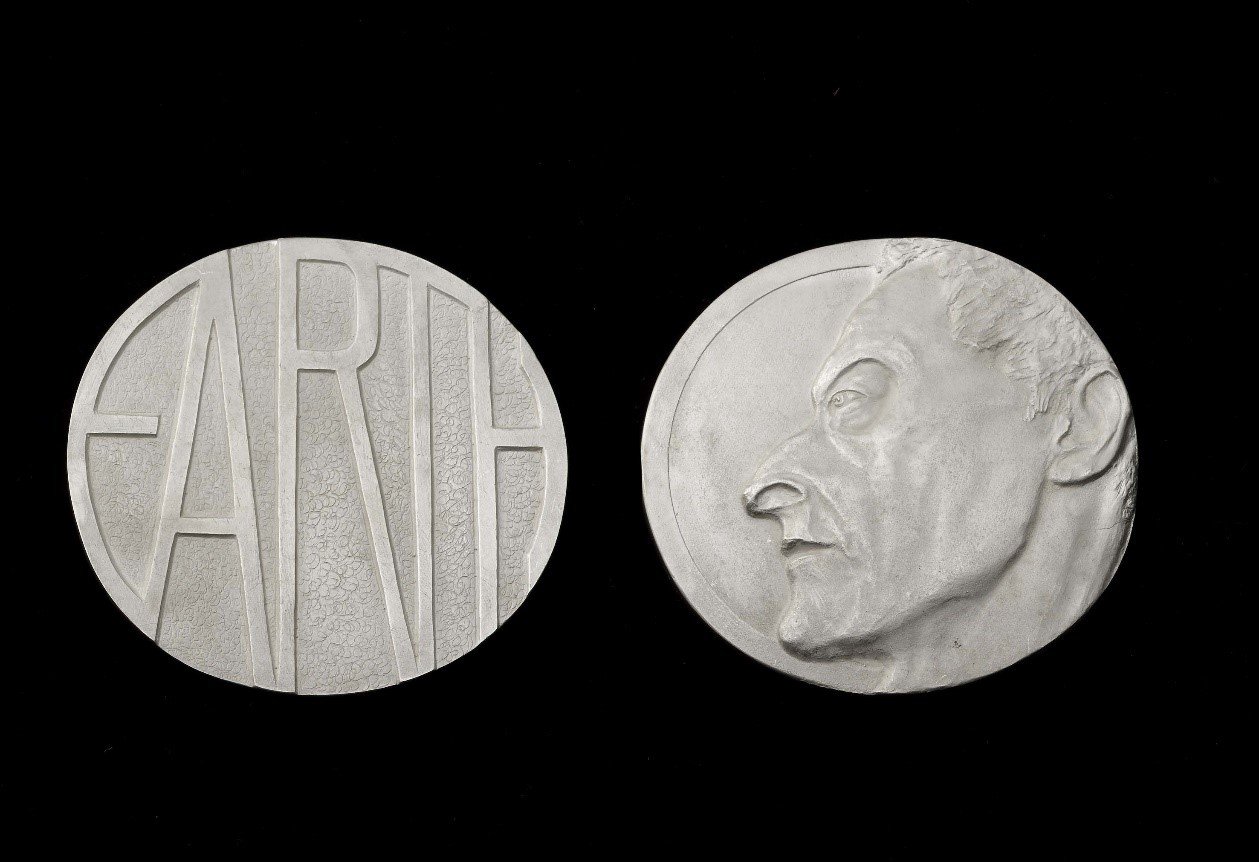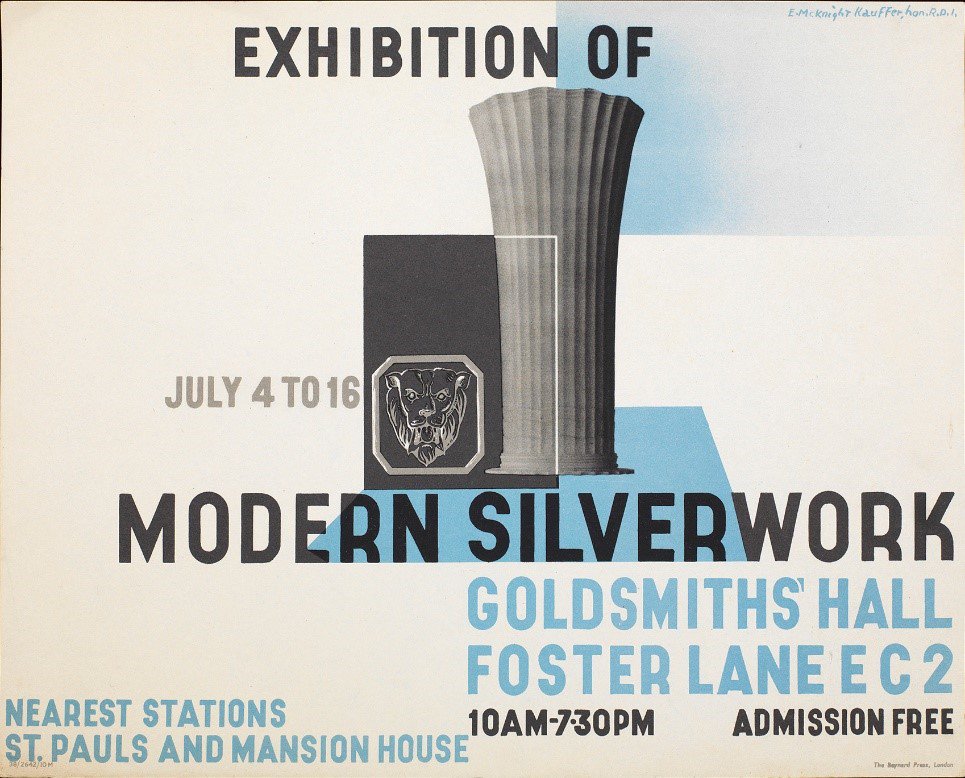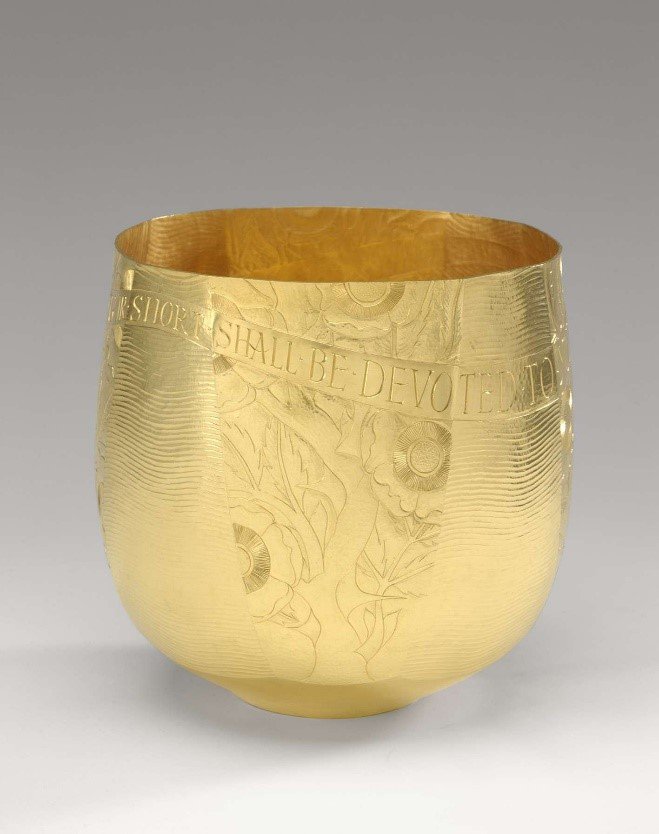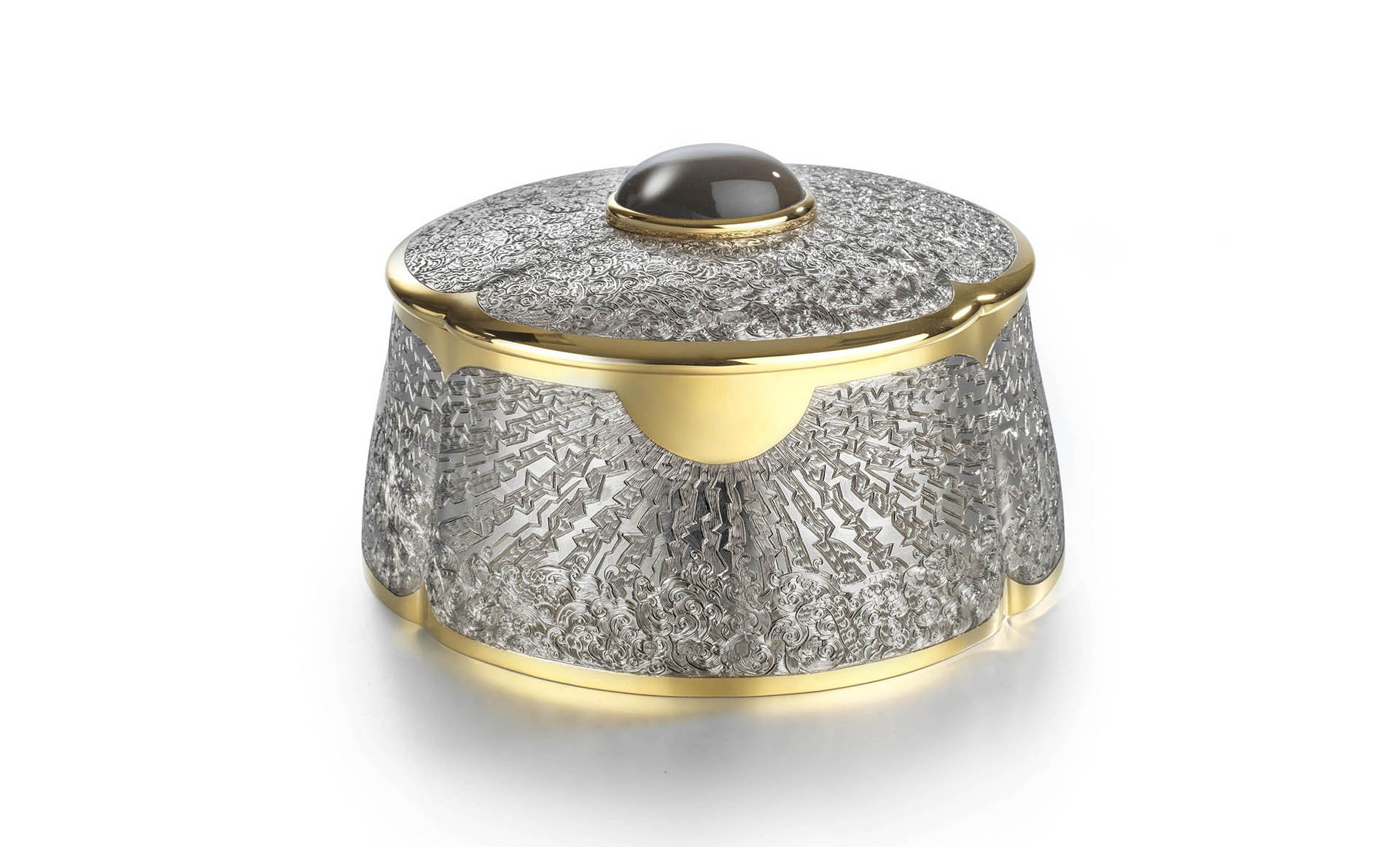Commissioning the Contemporary
By Dr Dora Thornton, Curator of Antique and Contemporary Silver, Modern Jewellery, and Art Medals at the Goldsmiths' Company
Lucian Freud Medal
“It helps me to keep him alive.” So says the sculptor Jane McAdam Freud of her silver medal of her father, the painter Lucian Freud. It is based on studies she made of him during his last weeks, when he finally allowed her to draw him as his daughter and fellow artist. It is an uncompromising portrait of a man nearing death. The medal is double-sided: turning it in the hand reveals an inscription. McAdam explains: “Art was at the centre of his world, and on one side of the medal Art is revealed at the Centre of the word EARTH.”

[Fig.1] Lucian Freud Medal, 2012, by Jane McAdam-Freud
This powerful silver medal meditates not only on the relationship between a woman and her father; but between two artists who specialise in portraits. It is unique, and it was a special commission by the Goldsmiths’ Company to mark Lucian Freud’s death in 2012. It is part of the long story—going back to 1741—of how the Company has supported excellence in its related crafts through its commissioning, which has enabled it to build one of the finest collections of British silver, gold, jewellery and medals to be seen anywhere.
Contemporary origins
The Company’s pioneering support for contemporary makers through competitions and commissioning since 1926 has enhanced the vitality of design and craftsmanship in each of these areas, keeping skills alive; advertising what can be done; and building audiences and awareness.
One of the milestones was the exhibition of modern silver held at Goldsmiths’ Hall for a couple of weeks in 1938, which attracted 37, 000 visitors to a completely new kind of display, advertised by a superb poster by Edward McKnight Kauffer [Fig.2] on the London Underground.

[Fig.2] Poster, 1938, designed by Edward McKnight Kauffer © Goldsmiths’ Company
The poster showcases one of six silver fluted vases shown in the exhibition, which were designed by R.M.Y. Gleadowe and made by Henry George Murphy, a specialist in the latest European design who had trained in Germany. The vases were commissioned specially for the show, and they still stand out in the 21st Century as superb examples of modernist design.
The new millennium
Different again, a masterpiece crafted in gold, is Michael Lloyd’s 22 carat gold bowl [Fig.4]. It was commissioned by the Company to celebrate the Golden Jubilee of Her Majesty Queen Elizabeth II in 2002, and it is engraved with words from a speech she made before her accession in 1947, in which she pledged herself to the service of her peoples: “My whole life, whether it be long or short, shall be devoted to your service”. The commission gave the master craftsman Michael Lloyd the opportunity to work in gold, using his special skill in chasing-the nearest thing to drawing on precious metal. As Lloyd explains: “All materials carry their own energy. Gold is wonderful as it has that extra sense of malleability and an energy that base metals just do not have.” The 8 faceted panels alternate between chased roses and undulating lines to suggest the seas around these islands.

[Fig.4] Golden Jubilee Bowl, 2002, by Michael Lloyd
A millennium commission made in 1999 gave another master craftsman, Malcolm Appleby, the perfect expression for his skills as an engraver. His casket [Fig.5] is crafted from white and yellow gold, and is designed to hold wildflower seeds, which were parcelled up and sown all over the UK in 2000 as symbols of regeneration for the next thousand years. Appleby’s engraving celebrates the elements, with a large cabochon moonstone in the lid suggesting the pull of the moon on the tides of the oceans, engraved around the stone. On the sides, a rising and setting sun appear above the ocean, with sunrays playing on waves which glisten in the gold. The whole casket conveys that sense of what Appleby calls “thought energy”, or creative flow; “the desire to make and create and change.” On working with gold, he says:
“I like to invest my time in materials which are almost supernatural. The beginning of all things is intertwined with the story of gold.”

[Fig.5] Millennium Casket, 1999, by Malcolm Appleby
All these objects—and there are many more in the Collection, from 1740 to the present—are rare works of imagination as well as masterpieces of design and technique. They are used in the life of Goldsmiths’ Hall; displayed in exhibitions and lent elsewhere; as well as being used for teaching the next generation of makers and promoting wider knowledge and patronage of the craft.